June 5, 2025 | 22:10 GMT +7
June 5, 2025 | 22:10 GMT +7
Hotline: 0913.378.918
June 5, 2025 | 22:10 GMT +7
Hotline: 0913.378.918
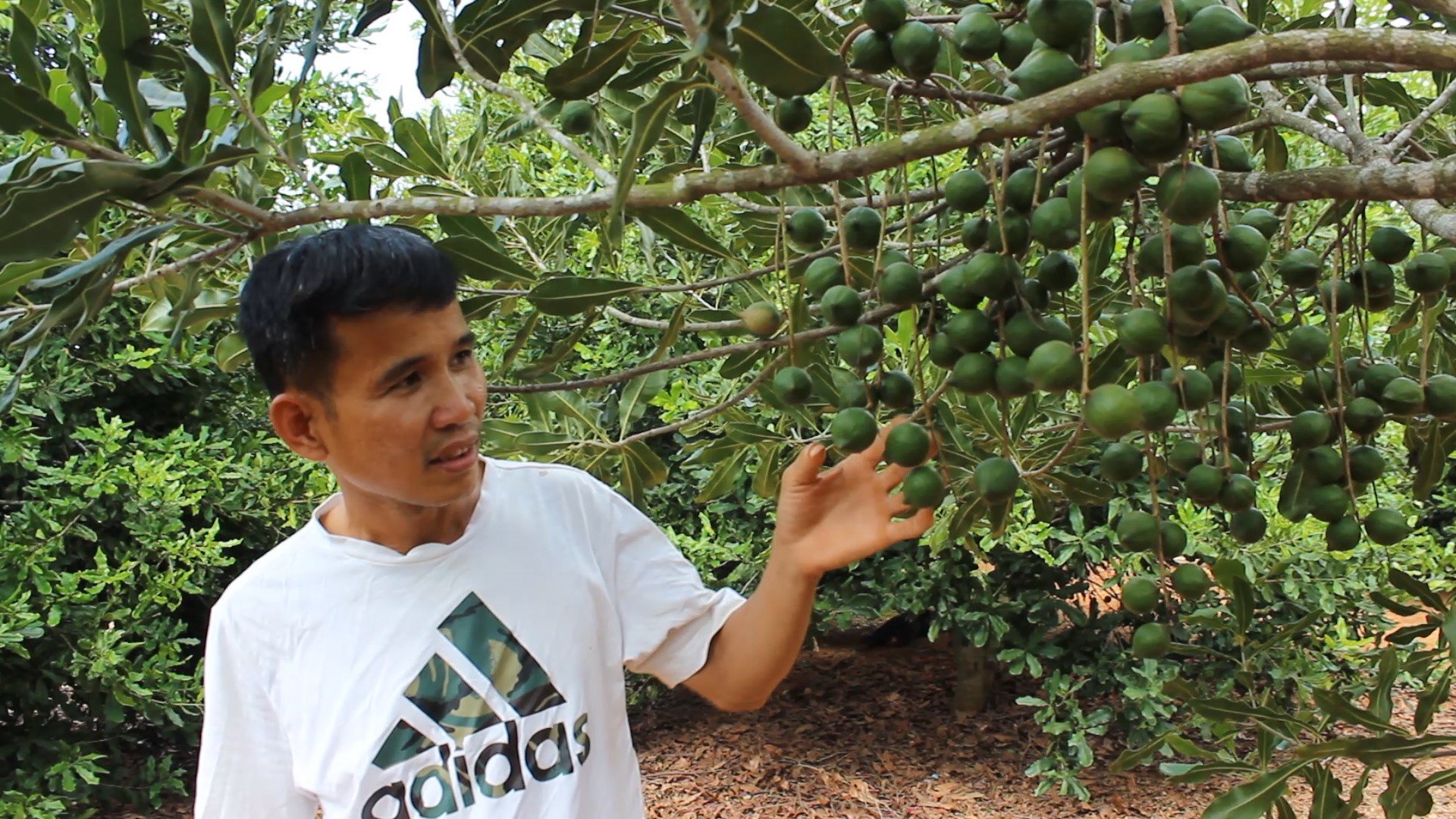
Only macadamia grown in areas with really suitable climate and soil conditions will yield. Photo: Tuan Anh.
Macadamia belongs to the genus Macadamia and family Proteacaea and includes many species that originated in Australia. Due to its high economic value and being a high-priced product among nut trees, macadamia is grown and developed quickly in many countries, such as South Africa, Hawaii (USA), China, and countries in South America and Southeast Asia regions.
In Vietnam, the first macadamia trees were planted in the 1990s, and the macadamia area is constantly increasing. Up to now, the macadamia tree has been grown in many provinces and cities in the country, including Dien Bien, Lai Chau, Lam Dong, Dak Nong, Dak Lak, Gia Lai, Kon Tum, Tuyen Quang, Cao Bang, Lao Cai, Yen Bai, Phu Tho, Lang Son, Ninh Binh, Thanh Hoa, Nghe An, Quang Tri, Quang Nam, Quang Ngai, Phu Yen, and Binh Dinh.
According to MARD’s report on the result of macadamia development in Vietnam in 2020, the total macadamia area currently reaches about 16,550 ha, and an estimated 14% of the area is grown from seedlings of uncontrolled origin. The Northwest and Central Highlands currently have about 15,440 ha of macadamia, compared to over 1,100 ha in other provinces, and a total output estimated at 6,750 tons of fresh nuts/year. The selling price of macadamia nuts in the garden ranges from VND 70,000–90,000/kg.
Macadamia is a new crop that requires relatively strict ecological conditions. An inadequate understanding of the biological characteristics and ecological conditions of the macadamia tree can cause long-term economic losses and opportunity costs.
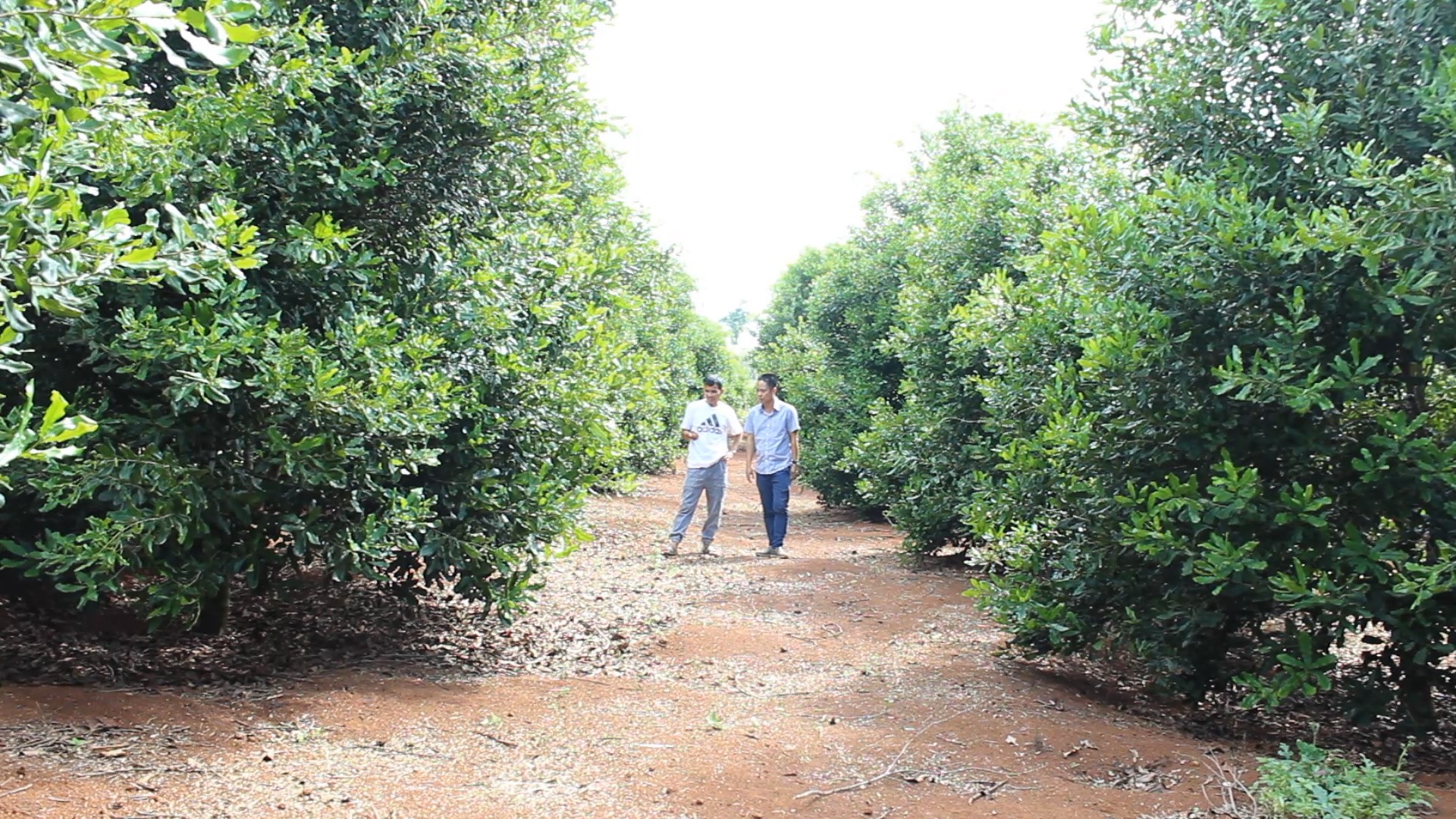
Macadamia is only suitable for ecological areas with an altitude of 500m or more and a suitable temperature background. Photo: Tuan Anh.
First of all, macadamia is a perennial crop, with a basic construction time of more than three years to start to fruit and over five years to achieve a high yield. Although it is a perennial plant, its roots are relatively shallow, so its resistance to wind and storms is much worse than that of other plants.
Of the two main ecological factors, namely climate, and soil, the climate is the decisive factor that needs special attention because it cannot be changed, while soil can be improved by many measures.
The macadamia tree is a temperate fruit tree that tolerates a cool, rainy, and humid climate. The tree can grow normally in the temperature range of 12–32oC; the optimal temperature is 20–25oC. During the flowering and fruiting stages, the tree requires a low temperature of 18–21oC, which is a decisive factor in the business efficiency of the macadamia tree in localities and also an irreparable factor through farming techniques.
Currently, effective macadamia-growing areas include localities such as Don Duong, Lam Ha, Duc Trong, Di Linh, Bao Lam, and Lac Duong districts of Lam Dong province; Krong Nang, Ea H'Leo, Cu M'gar, and M'Drak districts of Dak Lak; Tuy Duc, Dak Song, and Dak Glong districts of Dak Nong province; Kbang, Chu Se, Chu Pah, and Chu Prong districts of Gia Lai province; and Dak Glei and Kon Ray districts of Kon Tum province. These are localities with an altitude of over 500m and a temperature background during the flowering and fruiting periods to meet the ecological requirements of macadamia trees.
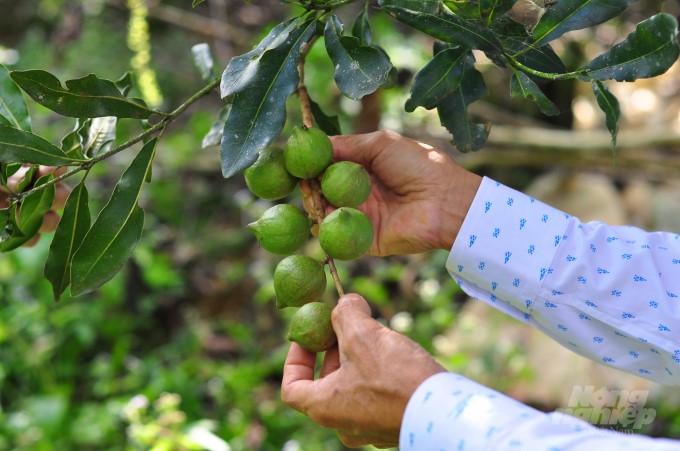
Macadamia is considered "the queen of dried fruit", but not all ecological regions can grow it. Photo: Tuan Anh.
Research results of the Western Highlands Agro-Forestry Scientific and Technical Institute show that the models of pure macadamia growing in Ea H'Mlay commune, M'Drak district (Dak Lak); Dak Rong commune, KBang district (Gia Lai); and Thanh My town, Don Duong district (Lam Dong), respectively, give a yield of 1 ton of nuts/ha with 5-year-old trees, 1.2 tons of nuts/ha with 6-year-old trees, and 3.5 tons of nuts/ha with 10-year-old trees. Economic efficiency reaches VND 80–300 million/ha.
The coffee-macadamia intercropping models in Lam Ha district (Lam Dong), Ea H'Leo district (Dak Lak), and Dak Mil district (Dak Nong) give a yield of 0.5–1.2 tons of nuts/ha with orchards of 6-7 years, and both have an economic efficiency of VND 23–60 million/ha higher than that of pure coffee growing.
Meanwhile, in localities with altitudes below 500m, such as Ea Sup and Buon Don (Dak Lak), the tree often gives unstable yields; many trees have flowered and fruited but then dropped a lot of fruit. Localities with latitudes greater than the Central Highlands can grow macadamia in areas with altitudes lower than 500m, but they must meet the requirement of an appropriate temperature during the flowering and fruiting stages.
The optimal rainfall for macadamia trees to grow is 1,500–2,500 mm, evenly distributed throughout the year. In places with a long dry season, if watered additionally, the macadamia tree will give a high yield. The flowering and fruiting stages without drizzle and wetness are necessary conditions for good-fruiting and high-yielding macadamia.
One thing that needs to be noticed when developing the macadamia tree is selecting a suitable variety. For perennial plants, seedlings have a long-term effect on production efficiency. Macadamia is a cross-pollination plant, so the macadamia seed is a combination of the genetic characteristics of the mother plant and the father plant.
If propagating by seeds (vegetative plants), only the mother plant can be selected, but the pollen source of the father plant cannot be controlled, and the seedlings nursed from seeds cannot have all the good characteristics of the mother plant. Therefore, it is advisable to grow transplanted seedlings with shoots that are good varieties and supplied from reputable, licensed producers.
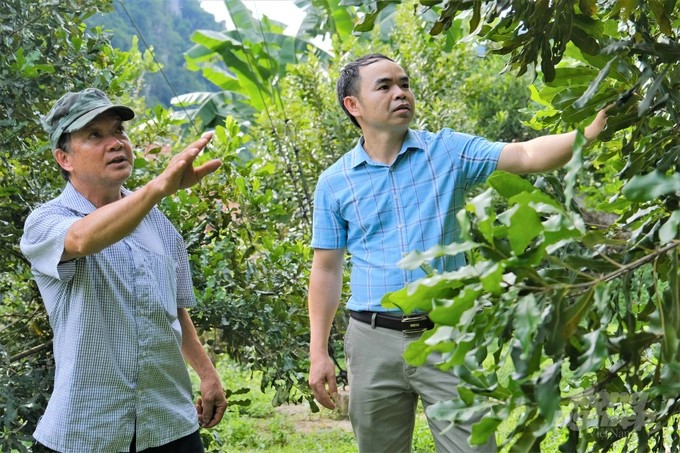
Macadamia should only be grown from transplanted seedlings with shoots that are good varieties and supplied from reputable, licensed producers. Photo: TL.
To meet the demand for macadamia varieties, MARD has recognized 13 varieties, including A16, A38, Daddow, OC, QN1, 246, 695, 741, 800, 816, 842, 849, and 900. Among the recognized varieties, the OC variety usually gives the highest yield and nut quality in the growing areas. This variety’s characteristic is that the fruit does not fall on its own and needs to be harvested from the tree. This characteristic can increase the harvesting cost but limit the damage from fungal diseases due to the fruit's long contact with the ground.
The project on sustainable development of macadamia trees in the 2021–2030 period with a vision to 2050, approved by the Prime Minister (Decision 344/QD-TTg, dated May 13, 2022), set a target of achieving an output of 130,000 tons of nuts by 2030; a national area of 130,000–150,000 ha, concentrated in the Northwest provinces (about 75,000–95,000 ha) and the Central Highlands (45,000 ha), and other localities with climate and soil conditions suitable for the ecological requirements of the macadamia tree (about 10,000 ha). The project shows that the macadamia tree is oriented to develop mainly in the Northwest and Central Highlands; other localities only account for 6–7% of the total area.
Therefore, localities outside the planning area need to be very careful when developing the macadamia tree. It is necessary to build and comprehensively evaluate the models before replicating them to avoid unnecessary losses.
The macadamia tree is a tall tree with a thick canopy and a large fasciculate root system concentrated in the topsoil about 70cm back, but the taproots do not penetrate deeply, so there is a risk of falling when there is a whirlwind or big storm. Therefore, do not plant macadamias in areas with storms. The macadamia tree can grow on many different types of soil but is suitable for loose, well-drained soils with a depth of more than 1m. The reality of macadamia production in the Central Highlands provinces over the past 15 years shows this more clearly.
Translated by Huyen Vu Thu
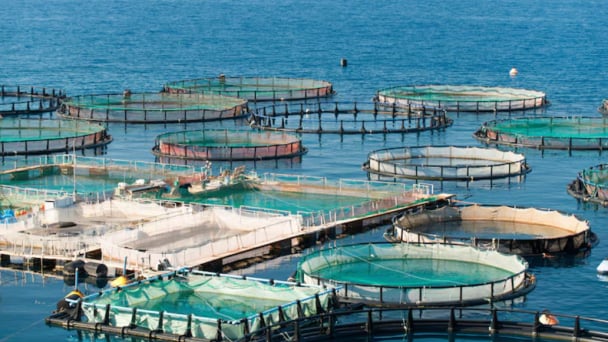
(VAN) Technology is redrawing the map of Vietnamese aquaculture: more modern, greener, and more sustainable.
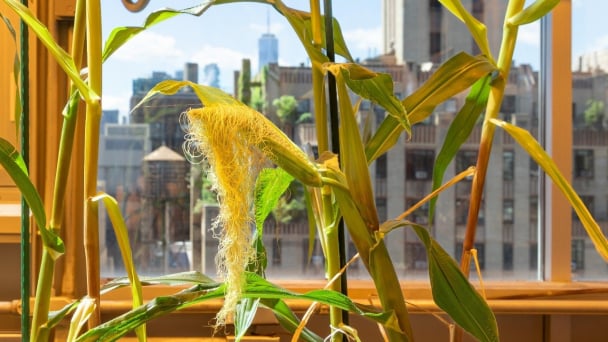
(VAN) Novel process harnesses machine learning to reveal groups of genes that determine how efficiently plants use nitrogen.

(VAN) Several scientists and farmers are experimenting with soil treatment in some key durian-growing regions such as Cai Lay (Tien Giang), Dak Song, Gia Nghia, and Dak R’lap (Dak Nong).
/2025/05/25/4127-3-073637_820.jpg)
(VAN) Thanks to the promotion from an FAO-implemented project, vegetable production in greenhouses in Moc Chau has seen strong development, from 1.5 hectares in 2021 to nearly 50 hectares in 2024.

(VAN) FAO has recently supported USD 140,000 to implement the project 'Risk mitigation human-animal interface risks through disease control initiatives in pig farming.'

(VAN) The People's Committee of Tra Vinh province has approved an adjustment to the investment policy for the Green Hydrogen Plant project, increasing its area to approximately 52.76 hectares.
![Reducing emissions from rice fields: [2] Farmers’ commitment to the soil](https://t.ex-cdn.com/nongnghiepmoitruong.vn/608w/files/news/2025/05/05/dsc08881jpg-nongnghiep-140632.jpg)
(VAN) Clean rice cultivation model in Thuong Tan commune, Bac Tan Uyen district, is assisting local residents in achieving sustainable agriculture by substantially reducing costs, increasing productivity, and protecting the environment.